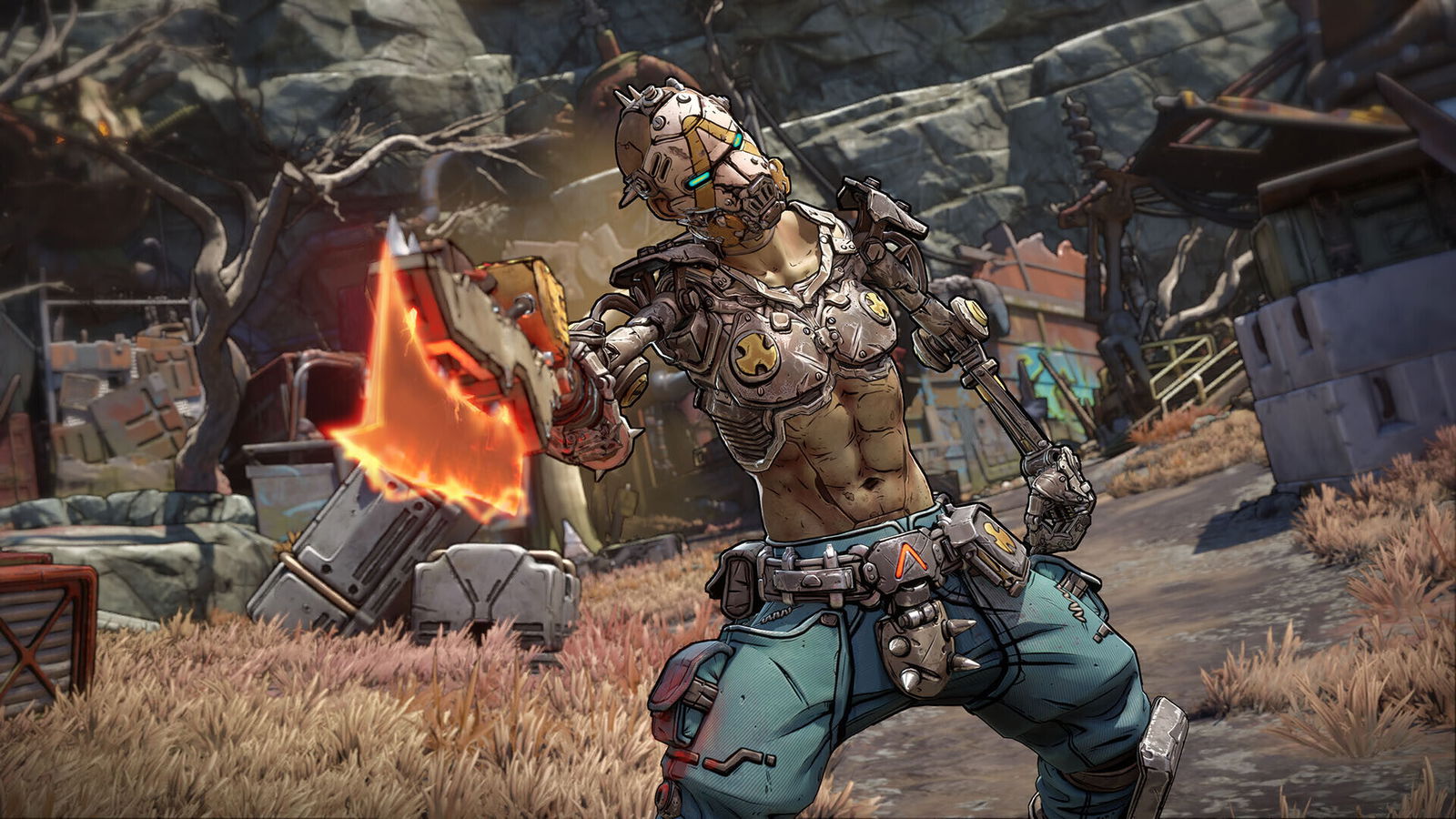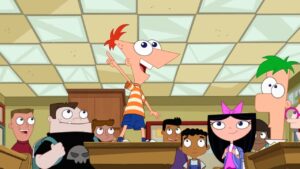Borderlands has always had this way of blending chaos, humor, and pure, unfiltered spectacle into a world that feels alive and ridiculous all at once. So when I got the chance to sit down with Adam May, the art director on Borderlands 4, I knew I was going to come away excited and more hyped up for Borderlands. Adam’s been shaping the series from the very beginning, helping craft the look, the feel, and yes, even the insane characters that make this universe so addictive.
Talking with Adam reminded me why I keep coming back to Pandora after all these years. Borderlands 4 doesn’t just push the series forward. It embraces everything fans love while finding new ways to surprise and delight. From the environments to the characters to those insane, over-the-top set pieces, it’s clear that Gearbox is building a world that’s as rich, weird, and chaotic as ever. For longtime fans like me, it’s an exciting evolution. And for newcomers, it’s a perfect entry point into one of gaming’s most unique universes.
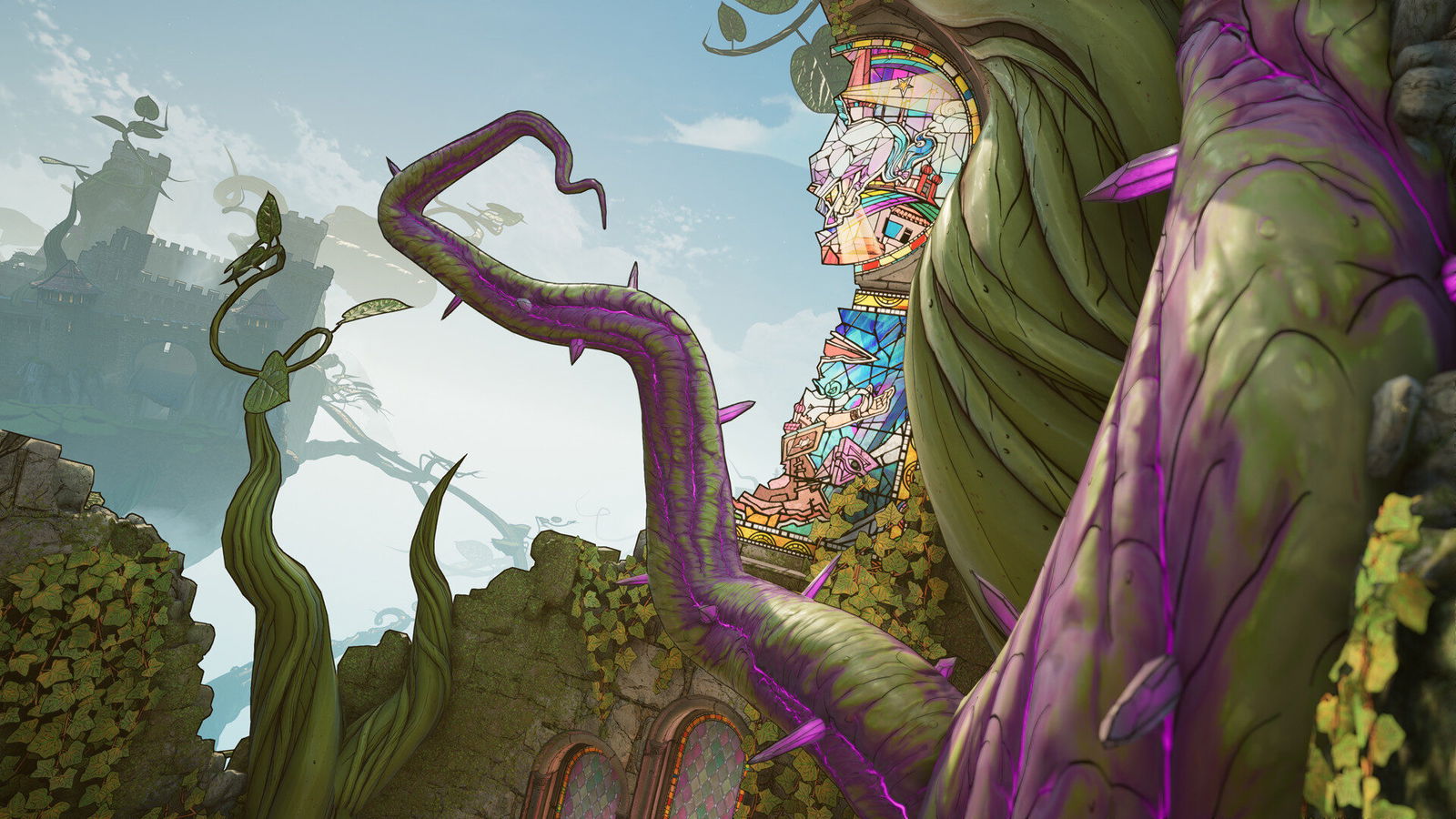
For those unfamiliar, could you explain who you are and what you do at Gearbox?
Adam May: Yeah, my name is Adam May. I’ve been the art director on Borderlands 4, but I’ve been at Gearbox a long, long time. I believe I’m just about 18 years now. So I started originally as a character artist on the first Borderlands, even before the art style change. So I had the privilege of making the first characters in the new art style after we made the switch. I made all of the original Vault Hunters, most of the big bosses from both Borderlands 1 and 2. Before I moved into art direction, I worked on a few unannounced projects for a while, first as art director, and then on Tiny Tina’s Wonderland, and then Borderlands 4 after that.
How does Borderlands 4 build on the visual identity of the series while introducing players to new and fresh ideas?
Adam: Yeah, that’s like the struggle with every game, but also part of the fun, right? I mean, immediately, some of the tools that Unreal 5 gave us really opened up a lot of what we wanted to do from the very beginning, but we were actually able to do this time around. There’s a lot of restrictions and limitations due to being split-screen co-op, and so there’s always performance considerations that we have to make in order to be able to make the thing run the way it needs to under those kinds of circumstances.
“Borderlands 4 doesn’t just push the series forward. It embraces everything fans love while finding new ways to surprise and delight.”
So specifically, one of the things we’ve always wanted to do is to make a real lush, jungle-esque sort of environment, and foliage is typically very expensive in general, but this time around, using Nanite with Unreal 5, it allowed us to actually make all the foliage we could possibly want to and fit it all on screen at one time. So every single leaf, every blade of grass, everything we actually hand-modeled, so it’s all actually geo for the first time ever. And then it being geo also allowed us to do a whole lot of really cool things because we developed a bunch of special tools specifically for this new engine and for Borderlands 4 that allowed us to do really cool inking things that we weren’t able to in the past.
So we have a whole system that actually creates a noise map across the world for all of our foliage, and it actually clumps together groups of foliage, whether it’s in the trees or in the grass, and then we ink the outside of that. So instead of a big wall of inky noise, if we hand-inked every single one of those, it creates nice little clumps that look very artistic and comic book-esque. So it’s really cool that we actually were able to use all this tech to make our hand-drawn style look more hand-drawn, even though it’s actually being handled a lot by the engine.
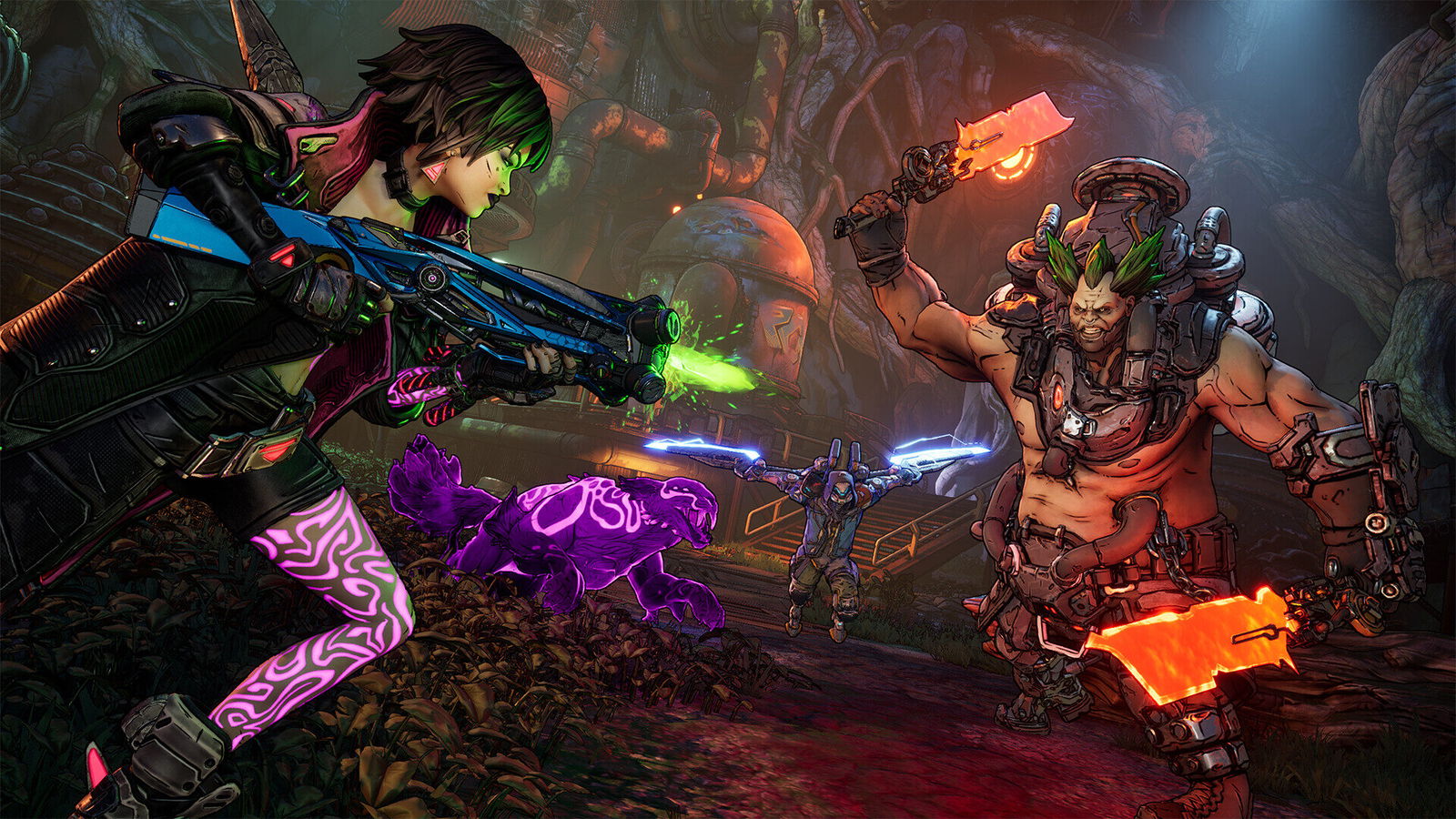
And then our lighting and materials in general— a lot of people think Borderlands by default is cel-shaded, it’s actually not. It’s very lifelike, especially this time around, very realistic. We use true PBR values in all of our textures and everything, and this time around, you’re really going to be able to tell that because the materials are more reflective. You can actually see the world reflected in our materials.
We’ve got lit transparency for the first time, so glass and plexiglass and more advanced materials actually look the way that you’d expect. Even our skin shaders are far more advanced than anything we were able to do before. So really everything, especially the things that make it clear to us, if you’re looking really carefully, that this is a realistic world, even though it is very, very stylized, is just rendered in a way that we were never able to before.
So we even get cool things, like one of my personal favorite things that we get is the auto-exposure, where you’ll be down in the caves because our world is very seamless this time around. You can go right from one space to another, so before we used to have a load if you were going to go into a cave system or coming out of that same system. Now you can transition right to it. So you get that whole blinding effect for just a moment, when you’re coming out into the sun, and it’s like you’re blind and then it comes up and you can see what’s around you, and the reverse going down into a cave. That all is a seamless experience now.
So again, it just makes Borderlands more of a believable universe that you’re part of, and not just a pretty picture. Oh, that was awesome. Yeah, that was great.
It’s clear that you have a lot of passion for it.
Adam: Oh yeah, we love what we do, that’s for sure.
So did you have a guiding vision for Borderlands 4 when you first set out?
Adam: Well, that was a long process and a lot of people involved. But once we got fairly close to the project coming together, there was a moment that we realized, oh yeah, this is what we’re trying to make. And from there, it was a moment that you just put a pin in the map, and it all blew up after that.
And so the world expanded really, really quickly. We knew we had a few specific feelings, a few specific visions that we wanted to share with people. But the game really did evolve quite a bit.
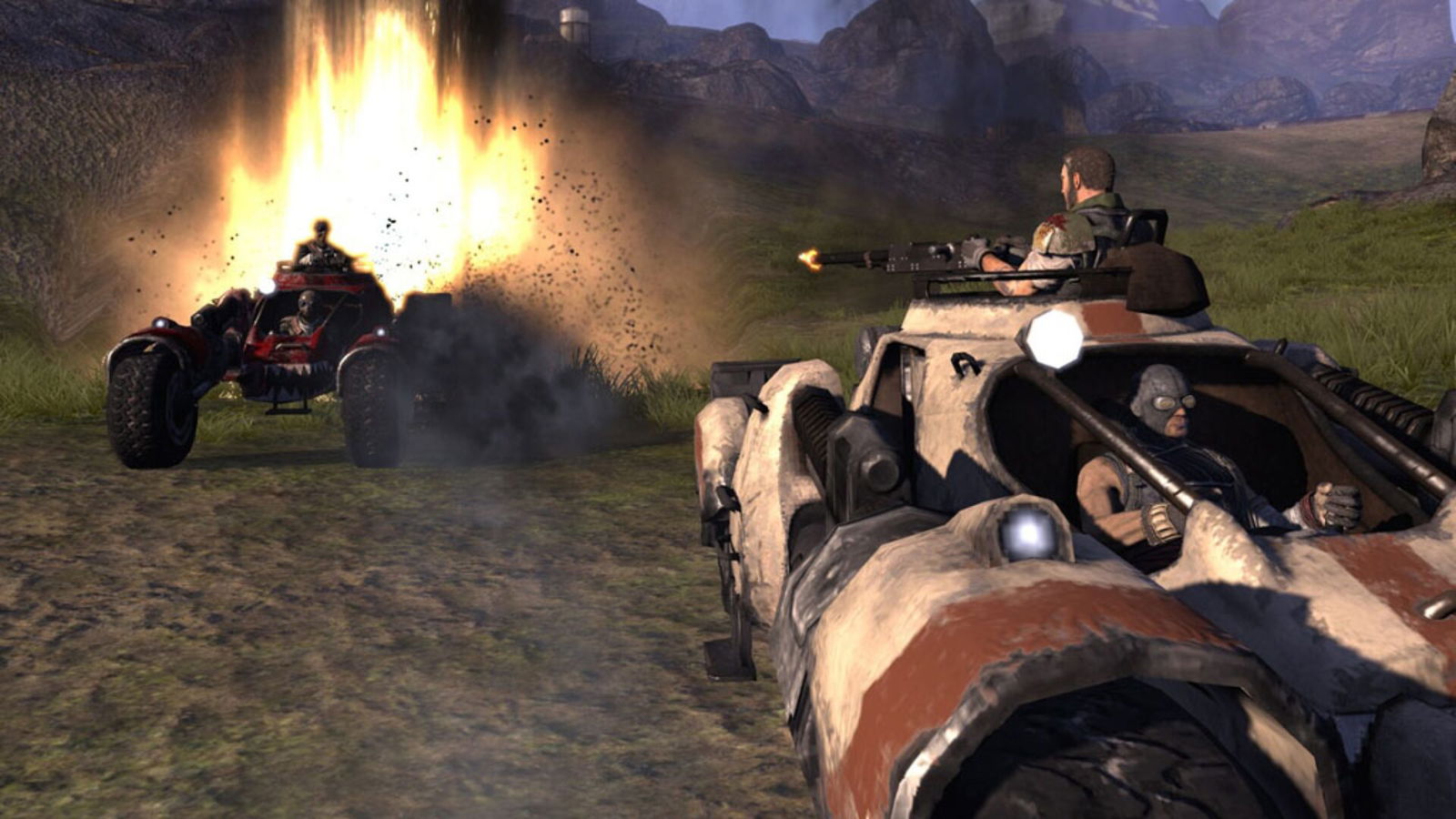
Once we got what those core elements down and tied together in a way that we felt good about it, everything else was built around it. I frequently get asked, what were your inspirations or your references? And to be frank, there wasn’t a specific movie that we were like, yeah, it’s going to be like this movie, or it’s going to be like this game. But there were definitely influences we took from other things that we enjoyed.
One of my favorite things that we talk about frequently is specifically the ability to see a location off in the vista, where in the past, those things were literally just a vista. This time around, those really cool things that we want to explore and we put out there for us to see as part of the vista—you can run all the way up to them and actually explore them. So that was constantly a thing that we kept reminding ourselves, like, let’s put that cool thing off someplace where we can see it to draw the player to it.
“…we developed a bunch of special tools specifically for this new engine and for Borderlands 4 that allowed us to do really cool inking things that we weren’t able to in the past.”
So it ended up becoming this constant thing of like, oh, what’s that cool thing? It’s so ADD-friendly, but it’s like, what’s that cool thing? And then run to that. And it’s actually something you get to do. And always there’s another one of those in the vista.
So you’re constantly just being pulled forward by what’s beautiful and cool and interesting in the background.
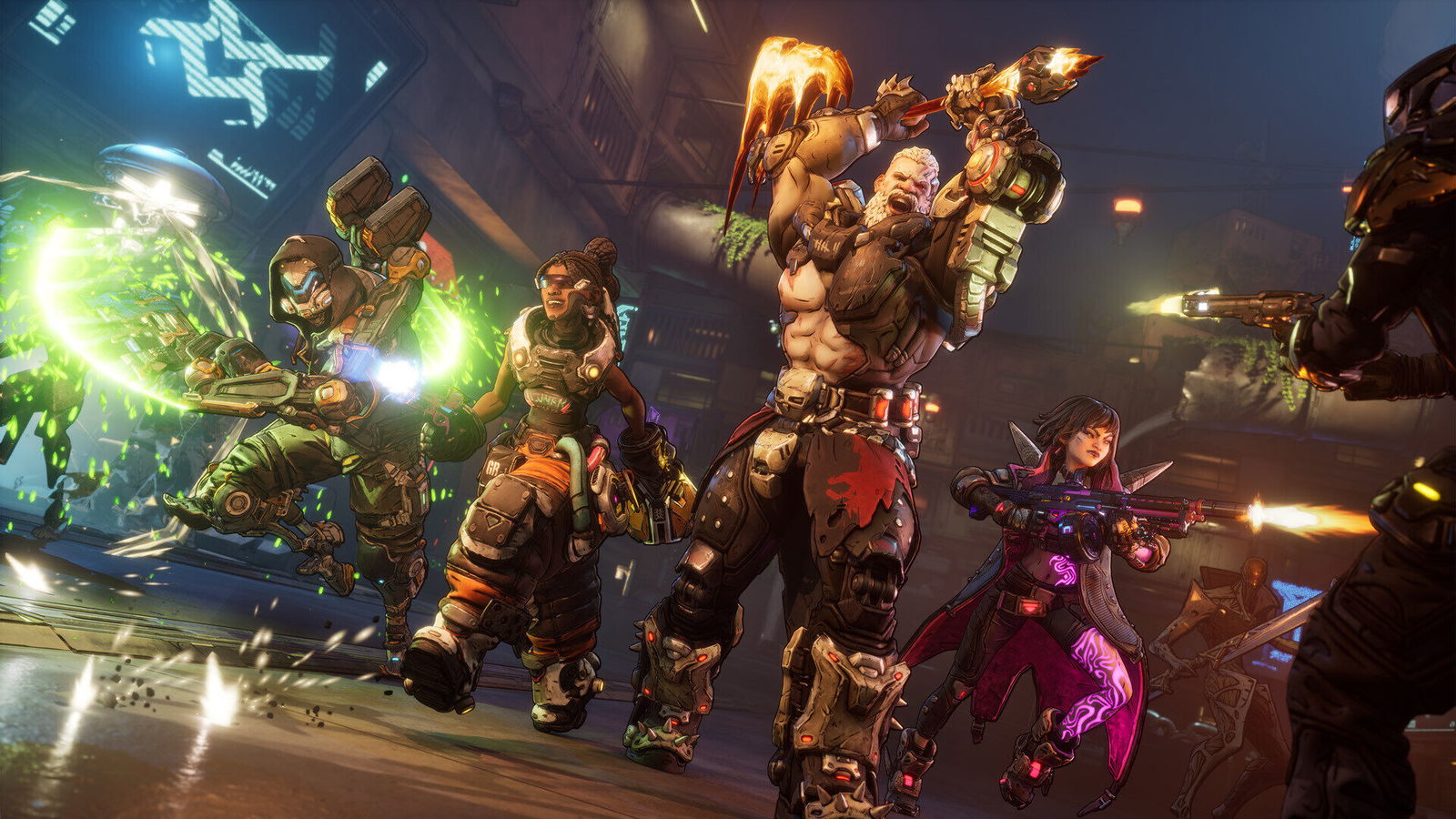
So you’ve gone into details about the environments, but with the new jump in technology, have there been any bold or experimental design choices with characters that you’ve been able to make this time that you haven’t been able to make in the past?
Adam: I mean, in general, our characters are like, I believe, almost three times the number of polygons. So in general, our characters are just created with a level of fidelity that we were never able to in the past. But even then, the fact that this is the first time we’ve ever done full-body cosmetic swaps for our characters is something that makes every one of our characters far more expensive to make, because it’s like making a brand-new character every time.
But it’s really, really neat to actually see them in different aspects of their personality represented in their whole entire body, not just a head swap. So across the board, we knew we wanted to lean into finding new characters. I mean, you’ve played some of the games, so you know, we’ve retread previous ground way less in this project than we ever have before.
And the whole goal from the beginning was to make characters that were cool and interesting enough that you didn’t miss the ones that we didn’t bring back, because we wanted to introduce players to a whole new world that was kind of isolated from the rest of the universe of Borderlands.
Since you’ve done a lot of work on the first Borderlands and kind of through the series to now, is there anything that you’ve taken across the series with you that you’ve been able to use towards your approach for Borderlands 4?
Adam: Yeah, like what’s funny is that a lot of people kind of get sick of hearing it, and it’s almost like a thing that we—well, not me personally, because I still use it all the time since the first Borderlands—is the term “badass.”
Like, that’s what we call some of our units, but that’s also how we describe anything in the way that we measure things. Like, if you can’t say a thing is badass, if you can’t ask why it’s badass, then it doesn’t actually belong in the game. And it is a real easy measure of something, because that is something kind of specific even though it sounds vague. If something’s badass, that means it’s tough, it’s aggressive, it’s mean, it’s fun. It’s something that you get excited about. And so frequently, that’s how we measure our characters, our environments—everything. If it isn’t badass enough, it doesn’t make the cut.
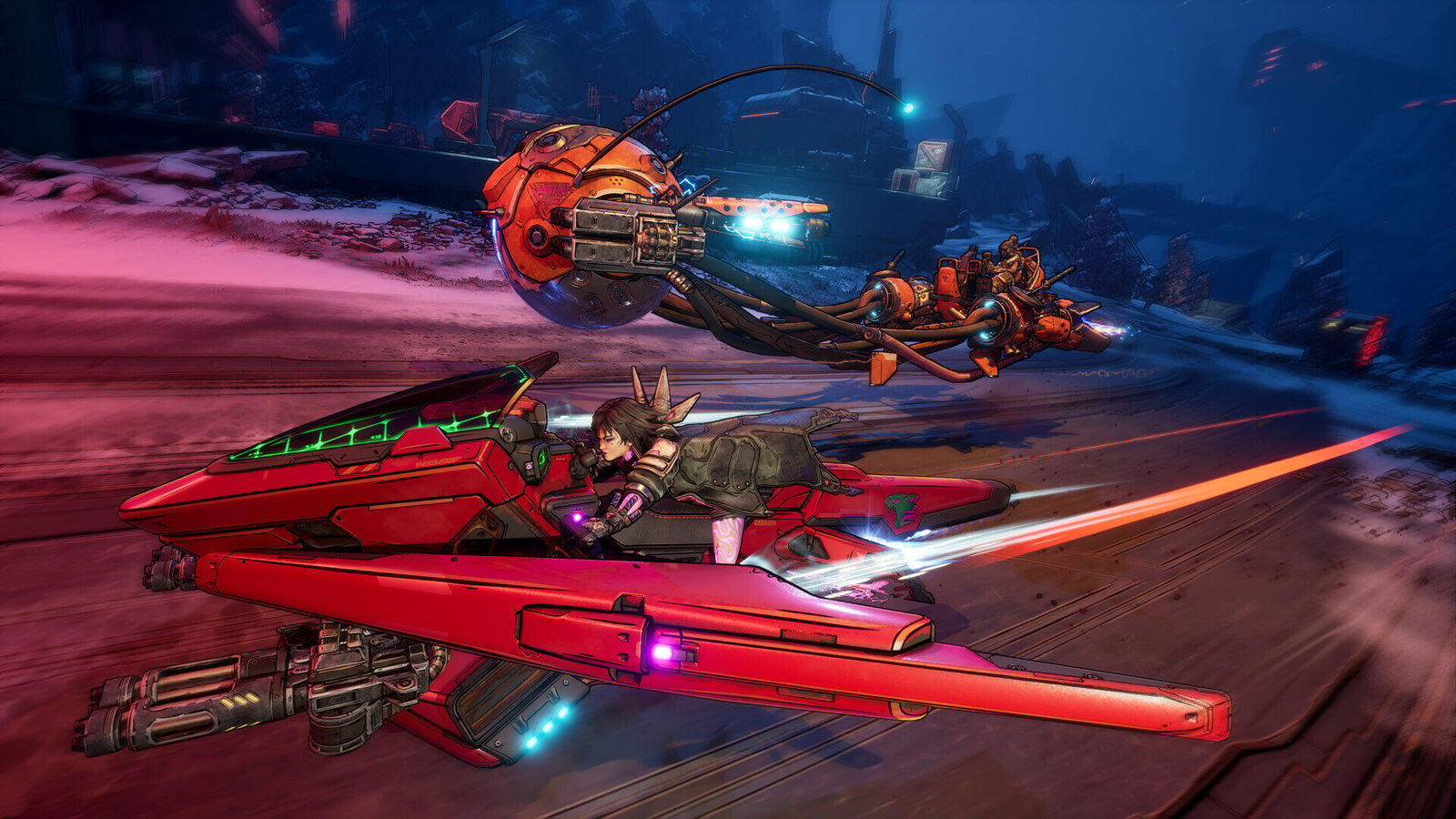
To add to that, how do you make sure that each location and enemy feels like Borderlands at its core while still trying to evolve the series?
Adam: One of the things that we always try to make key to our locations is a few things specifically in Borderlands 4 that we were focused on. First off, we want to make sure, you know, this is a very seamless environment. It’s the most player agency and control over where you go and how you experience it, but we wanted to make sure that players still have an actual experience, that it’s an adventure, and that there’s progress through the world.
Very early on, we knew that we wanted to create an environment where it felt like you’re going on an adventure and that you actually had traveled and experienced a large, expansive world. And so we start you off more so than any other game, and I actually love how often I see people comment on like, “This doesn’t look like a Borderlands game,” because we keep showing so much of the first area that you start in, which has a lot of very diverse real estate that you get to explore.
But the first area where the players start is very green, very lush, very welcoming and peaceful. That was very intentional because what we wanted to do is save all that wild, weird, desperate, post-apocalyptic, crazy Borderlands stuff that you expect for further into the game. So it’s this constant loop: you’re in an environment and it feels grounded and believable, and you’re part of that world.
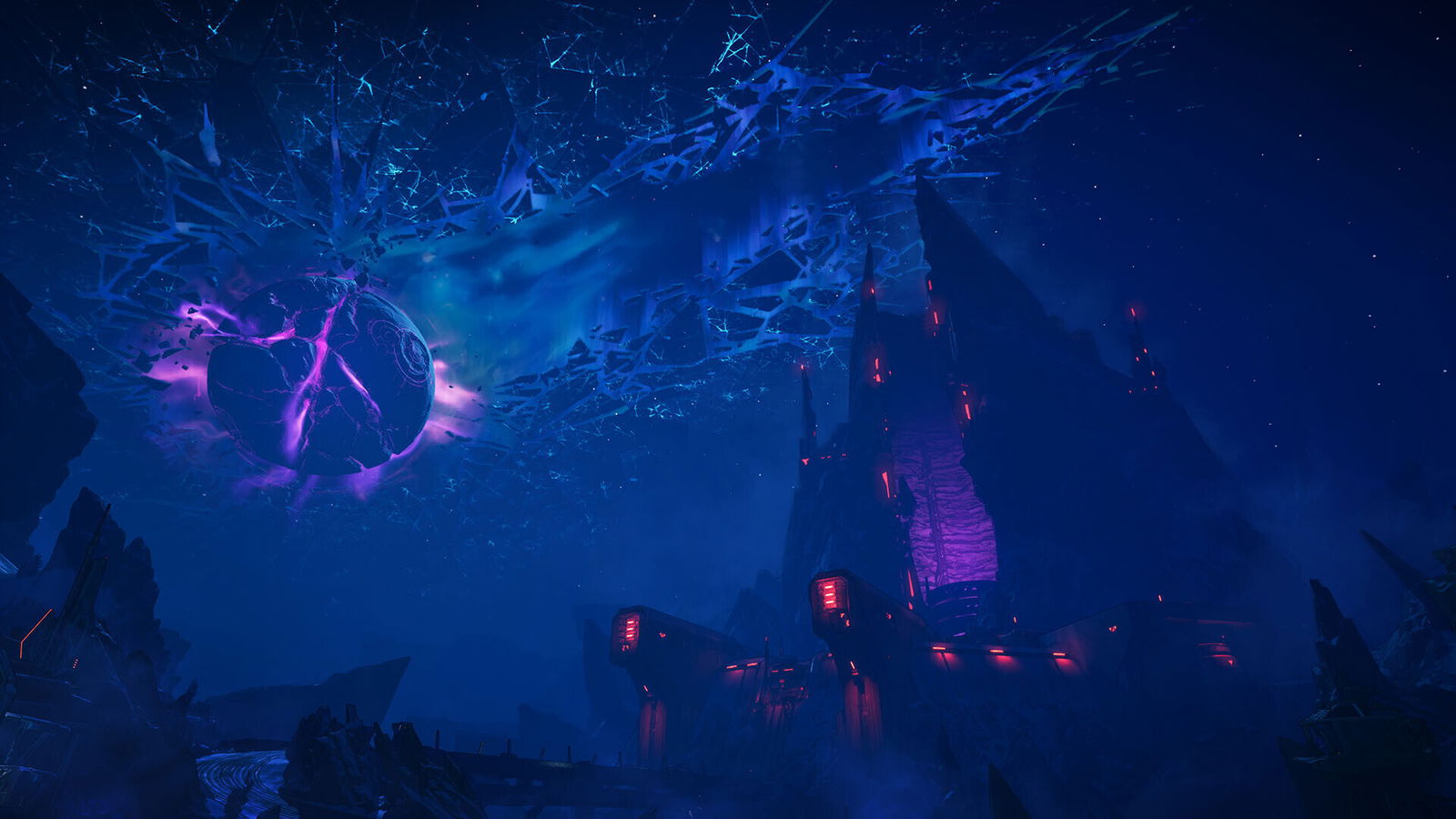
Then, as you dive deeper into the different quest lines for each zone, it gets weirder, wilder, and more insane. That loop repeats as you move into different sections of the world. So as you progress, the whole thing gets more and more insane. There are so many things I’m excited for people to see, but I can’t give them away because I want that surprise. This game, more than anything we’ve ever made, gets ridiculous, over-the-top, and badass like we’ve never done before.
So, without getting too specific, obviously for spoiler reasons, is there a particular area that you are personally most excited for people to experience?
Adam: I mean, the wildest one. So we definitely have, like I said, the whole world is very seamless, and there’s a lot of options to go everywhere. But there are a few particular moments where we funnel players in.
“What’s funny is that a lot of people, when they first see the Timekeeper, make some parallels to Handsome Jack, but he is literally the opposite.”
Our game definitely has a wild climax. I don’t want to tell you about it because I want you to experience it for the first time. But it has a “hanging your head out the window of a crashing airplane” kind of vibe, which I’m so excited for people to experience.
But my other favorite area that I can talk about is a crater in Carcadia Burns—that’s the big desert zone. There’s a crater where a big chunk of Alps has crashed down into it, and iridium has infused itself into the terrain. It’s a massive crater, and it’s actually flash-frozen parts of the desert. There are huge, giant shards of glass basically that have shot out from this thing. The whole zone is in a constant state of ash raining down.
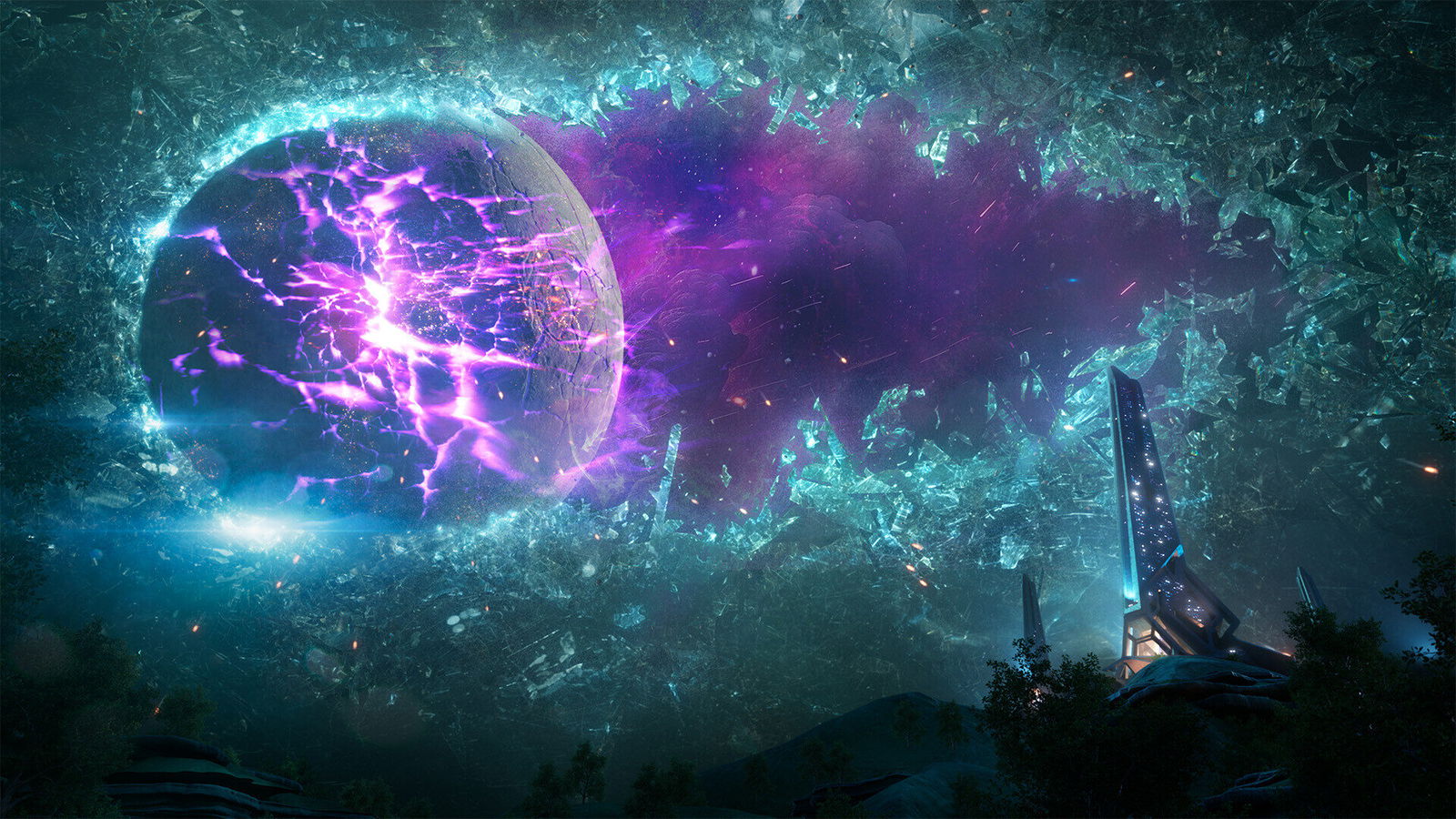
When you come into that zone, the entrance is super cool and exciting. The whole area is the most engrossing, engaging space we’ve ever created. Seeing how the Rippers built their entire civilization around mining this huge meteorite is just the coolest space we’ve ever made in any Borderlands game. It feels very unique.
We actually hijack the weather and time of day to get everything just perfect. These are handcrafted zones, even though we have a live time of day. We sculpt it to look and feel exactly how we want, and that’s definitely my favorite zone in the whole map.
Borderlands has always had strong villains, especially visually. What makes the Timekeeper stand out?
Adam: What’s funny is that a lot of people, when they first see the Timekeeper, make some parallels to Handsome Jack, but he is literally the opposite. He’s completely in control. He’s ageless. He’s got everything figured out. Everything to him is like a mathematical equation, and he knows all the answers. He believes he’s the only one keeping this entire universe together and safe.
For the first time ever, you are fighting a villain who is kind of a good guy at the same time as being totally evil. Players are going to feel divided when they finally fight and defeat him, and whether or not they’ve done something good or bad, that’s probably the most interesting villain in that regard we’ve ever made.
On the flip side of that, what’s the process that goes into building out the Vault Hunters? Those are obviously key touchstones in every Borderlands.
Adam: It’s frequently a huge conversation about what we’re excited about. The way we talk about our Vault Hunters is that if any one person really, really likes every one of them, then we’ve done a bad job.
We try to make sure there’s enough diversity between their kits, play styles, and even visual representation, so two or three of them appeal to everybody, but there’s always going to be one that someone goes, “Oh, I love that guy, I hate that guy.” When I get that feedback, it means we’ve succeeded. It shows there’s enough diversity in the styles we’re playing with.
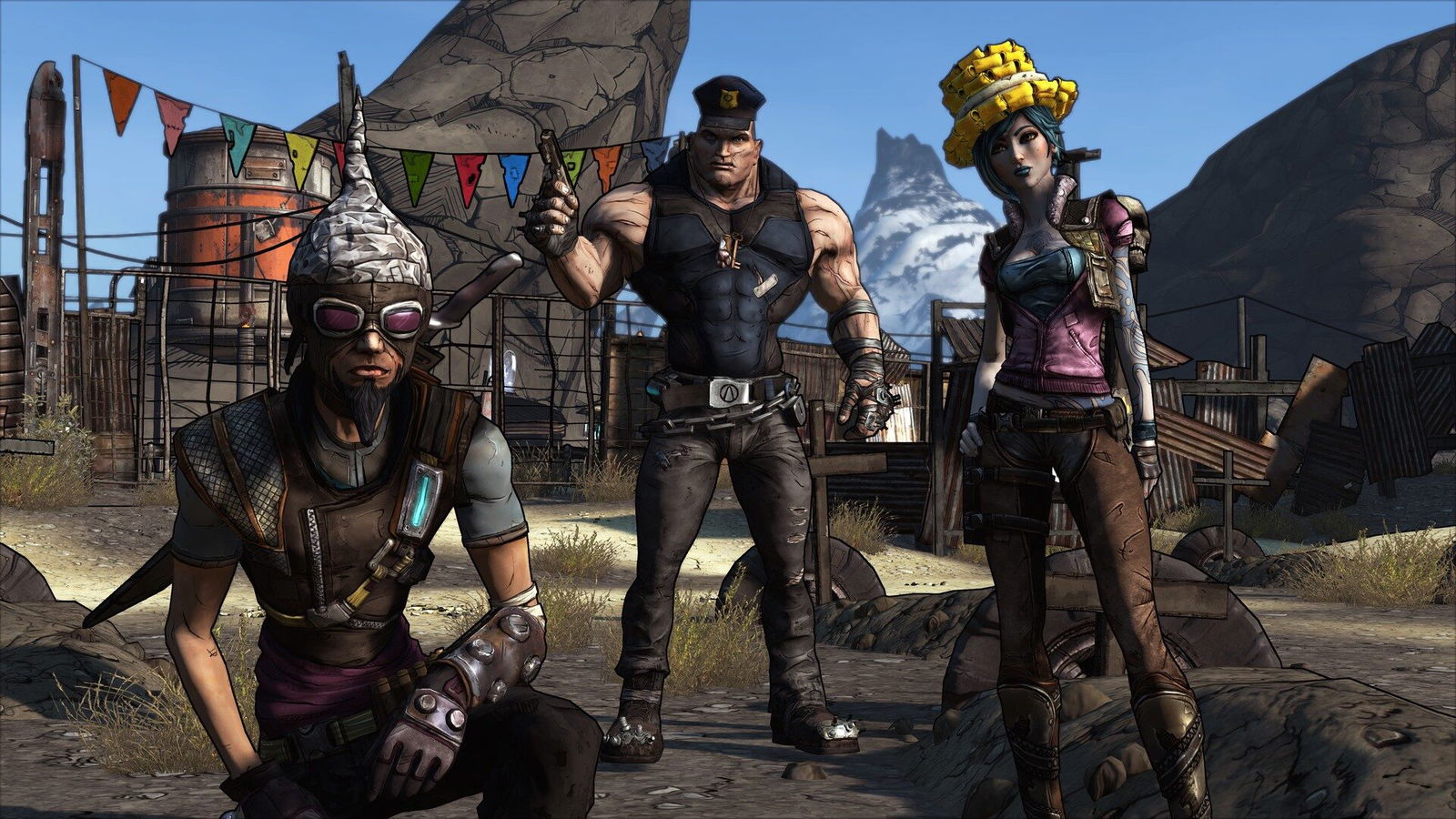
It’s all about hero or superhero fantasy fulfillment. We make some parallels to fantasy-style classes: which one is the big, beefy warrior? Which one is our rogue? Which one is our mage? That mage is typically our siren, but we’ve started mixing and matching and messing with that formula in ways we weren’t able to early on.
This time around, we really did twist and turn the expectations of the archetypes. The skill trees are vastly different from each other, genuinely changing the type of character you’re playing. Even the action skills are different. So each Vault Hunter has multiple ways to play, giving players the chance to find a unique build.
This might be a tough question—like asking who’s your favorite child—but out of the Vault Hunters across the entire series, do you have a favorite?
Adam: Across the entire series? Oh man. I’ve never been a really big guy; I’m 5’7”. I’ve always loved superhero fantasy fulfillment. I’ve always loved the Hulk. Early on, it was always Brick. Brick was my favorite.
That was the first character I actually made, even before we had concept art. We had some downtime during the art style change, and I just started making Brick because I thought he was awesome. He’s so big that even in Borderlands 1, it caused a ton of problems because we’re a cover-based game.
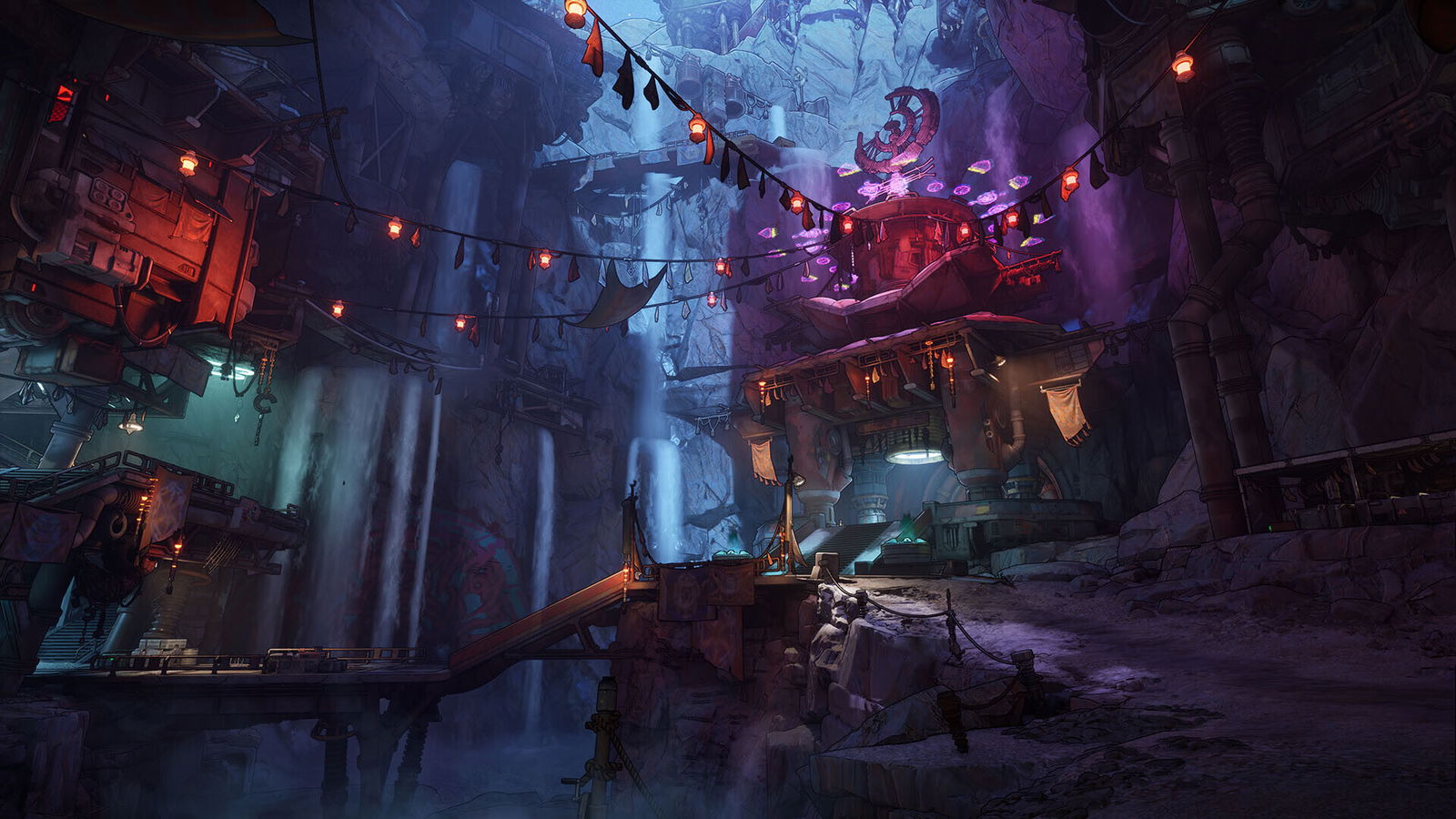
When we started on Borderlands 4, I was like, oh yeah, we’re going to make a giant character again. We have a new Brick—Amon—and he’s even bigger. The designers hate me for it, but it’s so cool. Running around as Amon, you tower over NPCs, and even in cinematics, the camera in your head shows you towering over everyone. He’s the most physical, crushing-skull kind of character we’ve ever made, and that’s right up my alley.
Does fan feedback from previous entries, like Borderlands 3 and Tiny Tina’s, shape the art direction for the following game at all?
Adam: Absolutely. The biggest thrill of my career is seeing fans make cosplay, the effort and time they put in, and how much they care about our characters. Sometimes they notice things even more than we do—the ink lines I did on a character, drawn on themselves, is the coolest, most flattering thing imaginable.
We’re always sharing feedback from players, showing things that people are excited about, and even incorporating fan-created lore when possible. We make our games because we want people to love them and play them. Whenever fans engage with our world, we try to make those contributions part of it as much as possible.
